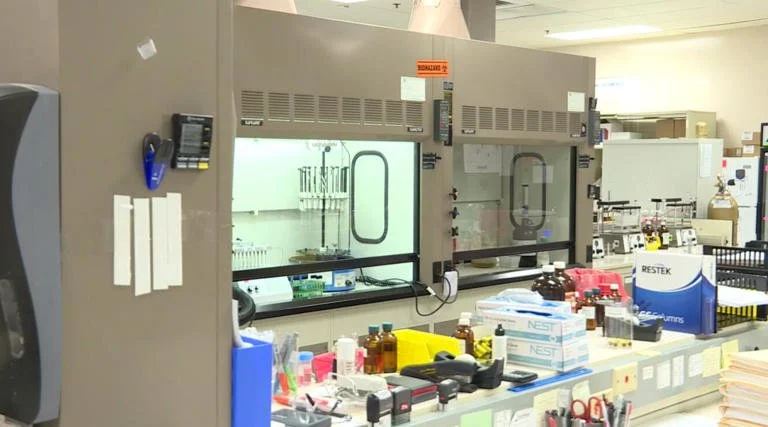Making the Case: How Labs Can Advocate for Upgrades and Expansion
A proposed $20 million expansion of the Sedgwick County Regional Forensic Science Center aims to improve justice delivery by addressing rising case volumes, advancing technologies, and preventing DNA contamination. Image: KWCH
Across the US, public labs are grappling with aging infrastructure, rising caseloads, and outdated layouts that no longer support modern forensic workflows. The proposed $20 million expansion of the Sedgwick County Regional Forensic Science Center in Wichita, KS, offers a compelling example of how labs can advocate for meaningful upgrades—by connecting physical limitations to public service impact, engaging staff in the planning process, and aligning investments with justice and safety outcomes.
Making space for justice
The center currently supports a wide range of critical services, from DNA analysis to ballistics, toxicology, fire debris, and the county morgue. But physical constraints are increasingly creating bottlenecks and inefficiencies. Shelly Steadman, PhD, director—Regional Forensic Science Center, tells Lab Design News that while there was a small annex added in 2010, the facility has long since outgrown its footprint—especially as forensic science has evolved.
“The main Toxicology Laboratory is in the legacy building and cannot accommodate LC-MS/MS instrumentation, so it is not conveniently located where specimens are received, processed, extracted, or stored,” Steadman says. Similarly, the DNA section has expanded over the years into multiple non-contiguous rooms without optimal air handling, limiting workflow and posing contamination risks.
“Existing DNA section has expanded into various rooms within the legacy building throughout the years but these areas do not have optimal air handling and, because they are not contiguous, do not accommodate a fluid workflow. There is no room for additional scientists and no bench space for additional robotics. DNA lab staff office in three different areas within the center, which is not conducive to teamwork,” Steadman adds.
End user input at the center of planning
One key to advocating for an effective expansion, Steadman emphasizes, is gathering firsthand input from those using the space every day. While she began working on a DNA lab addition in 2014, the scope has since grown to include nearly every discipline the lab supports. To ensure the expansion addresses the right needs, she is collaborating closely with the center’s quality manager, forensic supervisors, scientists, pathologists, autopsy staff, and investigators.
“Sedgwick County Facilities has worked with an architect to complete space studies that were used to estimate projected needs and the overall cost of the addition and legacy building renovations,” says Steadman. “This was based on review of the current usage against recommended standards for office and dedicated laboratory work areas.”
Their insights—along with space studies conducted in partnership with Sedgwick County Facilities and the architectural team—were critical to identifying inefficiencies, determining the square footage needed, and estimating costs based on best-practice standards for lab and office space.
A space for modern forensics
The new building would house dedicated labs for DNA analysis, firearms testing, drug identification, and fire debris. These additions would free up space in the legacy building for toxicology, medical investigations, and autopsies—areas that are currently cramped, disjointed, or unable to support new technologies like QToF mass spectrometry and advanced imaging in the autopsy suite.
Contamination concerns, especially in DNA processing, are another driving force behind the expansion. “The Biology/DNA section was originally designed in the early 90s when RFLP was still being used, but was equipped with a PCR room technology for expansion. As new technology is implemented, the Biology/DNA section has been required to expand into spaces not specifically designed for performing the laboratory’s activities,” Steadman says. “As such, the workflow is not fluid and requires extra measures to prevent contamination. This causes the processing of evidence to not be as timely as would be with a better workflow design.”
Temporary fixes, long-term vision
In the meantime, staff have taken creative steps to manage space constraints. A former library was converted into offices, high-density storage was removed to make room for new workstations, and equipment has been moved off generator-backed circuits in favor of battery backups to free up emergency power capacity. “We’ve made great effort to remove any and all instrumentation that is not used for casework to free up much-needed bench space for small scale robotics and/or more efficient technology,” Steadman says.
Still, these workarounds can only go so far. A purpose-built facility would not only ease current pressure—it would also position the lab to grow its team, integrate automation, and reduce the need for off-site firearms testing. “Additional workstations will allow for addition of future scientists and/or accommodation of student interns,” Steadman says.
With violent crime rates high in Sedgwick County—home to 40 percent of Kansas’s violent crimes—the stakes are clear. This expansion isn’t just a facility upgrade. It’s an investment in a more responsive, efficient, and scientifically advanced justice system.
The proposed addition would be constructed across the street from the existing forensic center. The county commission is scheduled to vote on the project during its budget adoption meeting this August.


